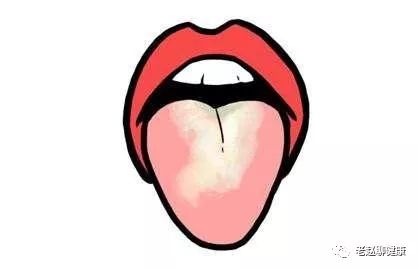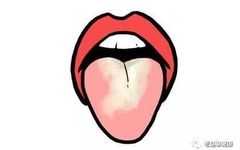Tongue Quality: It includes two aspects: Spirit (“vitality”) and color.
Spirit
It is mainly divided into four types: Rong (vitality and energy are abundant), Ku (dull and lifeless, indicating deficiency of essence and blood), Run (moist), and Zao (dry).
1: Rong
The tongue is the external manifestation of muscle. When healthy, it must appear vibrant and colorful, with a bright and clear surface, indicating abundant qi and blood, and strong vitality. Even if there is illness, it is likely to be mild.
2: Ku
Dull and lifeless, in contrast to vitality, indicates a deficiency of fluids and blood, where the muscles lack nourishment and vitality, representing a critical condition. Even if the illness is not severe, one should be cautious of changes.
3: Run
A moist tongue surface indicates fullness of fluids and blood, but it should not be excessively wet like water. This is often seen before recovery from a prolonged illness.
4: Zao
A dry tongue surface, not covered with a prickly coating, indicates a gradual dryness and lack of moisture, suggesting depletion of fluids and blood, prolonged deficiency of qi and yin, and loss of smoothness, which is also a critical sign.

Tongue Color:
The color of the tongue is due to the rich blood vessels beneath the mucous membrane and muscle layer, with the blood color showing through the white, semi-transparent surface of the tongue. When healthy, the blood color is normal, appearing pale red and moist; changes in blood composition or concentration, as well as thickening or thinning of the mucous membrane, indicate illness.
1: Red Tongue
A tongue that is slightly redder than normal indicates inflammation in the superficial layer of the mucous membrane, with cellular infiltration and capillary dilation; if the tongue body is normal, it suggests heat in the blood, indicating a solid pathogen; if the body is thin and shriveled, it indicates damage to the fluids in the tongue tissue, leading to atrophy of the mucous membrane, representing fluid deficiency and floating heat.
2: Dark Red Tongue
A tongue that appears dark red is also a result of the same mechanism as a red tongue, but it often indicates a solid pathogen, representing an invasion of warm toxins into the blood. This is commonly seen in severe febrile diseases.
3: Purple Tongue
A tongue that is red with a bluish tint, dark in color, indicates stagnation of blood in the superior vena cava or portal vein, with obstructed venous blood flow and poor return, representing hypoxia. This can lead to unoxidized venous blood returning. An increase in blood pigment is seen in warm diseases, indicating a solid pattern of heat toxin attacking the heart; in chronic diseases such as cardiovascular disorders or late-stage liver disease, a purple tongue indicates a deficiency pattern. A solid pattern of purple often appears deep red; a deficiency pattern is usually dark purple without red.
4: Blue Tongue
Blue indicates a deep shade of green, also suggesting poor venous return, representing a chronic disease approaching decline, or acute food poisoning leading to heart failure and other critical conditions.

5: Dark Tongue
A tongue that is slightly darker than normal, though not as deep as purple or blue, indicates obstruction of capillary return on the tongue, representing prolonged illness and qi deficiency, leading to poor blood circulation, indicating a prolonged internal injury.
6: Tender Red Tongue
A light red tongue with a slight purple hue, resembling a pale rose color, is close to the mechanism of dark red. Clinical observations by Xu have confirmed that this is often caused by excessive alcohol consumption, which can harm the liver, leading to obstruction of the portal vein and resulting in a tender red tongue.
7: Pale White Tongue
A pale white tongue without luster indicates deficiency of qi and blood, making it difficult for the blood to appear vibrant. However, the severity of the condition varies; if the tongue body is normal with a coating, the illness is mild; if the tongue is thin, without coating, and shriveled, it indicates a severe and critical condition.
8: Stasis Spots on the Tongue
A normal tongue color with purple spots or streaks on the surface or sides is called stasis spots. This indicates localized pigment deposition, representing systemic blood stasis diseases.

Appendix:
Tongue Tip
Belongs to the heart; if the tongue tip is red, it indicates floating fire, commonly seen in insomnia, irritability, dry mouth, and poor appetite; if the heart yin is deficient, the tongue tip appears smooth and without coating.
Tongue Front
Belongs to the lungs; if the front third of the tongue is smooth and without coating, it indicates deficiency of lung qi and yin, often seen in chronic cough with little phlegm, or shortness of breath, and poor bowel movements.
Tongue Middle
Belongs to the spleen and stomach; a thick greasy coating indicates damp accumulation in the spleen and stomach, or internal phlegm turbidity; if the coating is dry and thick, yellow-brown or gray-black, it indicates prolonged heat accumulation; if the center is smooth and without coating, it indicates deficiency of spleen and stomach yin, often seen in ulcer diseases.
Tongue Root
Belongs to the kidneys; if the root is swollen with red bumps, it often indicates tonsillitis, representing kidney yin deficiency; if covered with thick greasy white coating, it indicates insufficient kidney qi, often due to prolonged dampness and turbidity accumulation, representing a chronic illness.
Tongue Sides
Belongs to the liver and gallbladder; if the tongue tip is red and connects to the sides, it indicates upward fire of the liver and gallbladder; if there are stasis spots on the sides, it indicates stagnation of liver qi and systemic blood stasis.

